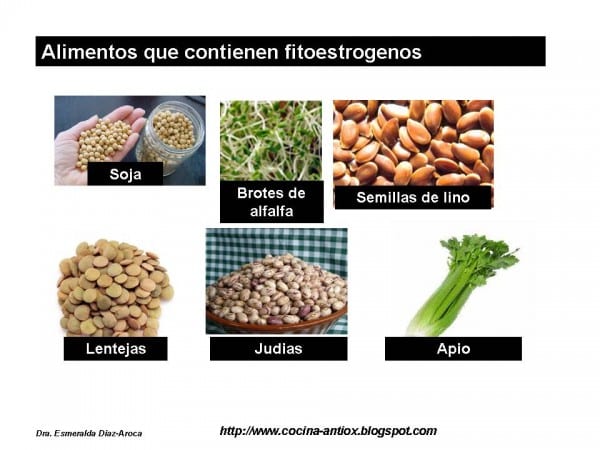They exist in the human diet in addition to macro y micronutrients, a series of non-nutrient, bioactive, plant-based, and health-important compounds commonly known as phytoestrogens.
The phytoestrogens They are plant compounds, phytochemicals, without steroids, of varied structure. They are found in many fruits, vegetables and grains. The phytoestrogens are mainly FlavonoidsThese are the best known, active and relevant for human consumption.
Isoflavones: they are in the soybean and in the Red clover.
They are the most potent from an estrogenic point of view.
Dietary isoflavones: Genistein y Daidzein, are in the vegetables (soy, chickpeas, lentils, beans).
Su mechanism of action is activated by being altered by the intestinal flora, metabolized and transformed by the liver.
- Soybean: abundant source of isoflavones.
It can be consumed as soy beans or in the by-products made from them: textured protein, soy milk, soy flour, miso (soybean paste) and tofu (Tofu), as well as fermented soybeans.
It is advisable to use the soy protein as a meat substitute. Soy consumption should be at least 20 grams / day.
- Red clover (trifolium pretense): is another source of isoflavones.
Its compounds after consumption are metabolized into genistein y daidzein.
These compounds are similar to estradiol (E 2) in its form and its small estrogenic activity.
Lignano (not flavonoid): it is in the flax seeds.
- Linen:
It is ground at the time of consumption to take advantage of the lignano present under the shell; otherwise, it is not metabolized in the intestine and does not fulfill its function.
The seeds must always have a strict quality control and be exclusive for human use.
The phytoestrogens they can behave like estrogen agonists or antagonists. Alternative therapies to Hormone Replacement Therapy (HRT) are based on phytoestrogens.
Foods Highest in Phytoestrogens:
- Flax seed
- Soybean
- Tofu
- Soy yogurt
- Sesame seeds
- Flax bread
- Multigrain bread
- Soy milk
- Humus
- Garlic
Source | Article by Dr. José Nader (Gynecologist)

I am trying to gradually incorporate products with nutritional value such as soy, nuts, lentils into my diet. almonds, flax, etc. So I try to recover bone mass since I suffer from osteoporosis, happily today there is a lot of information.